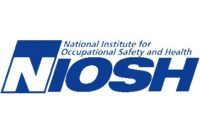12 deaths a day: Why Workers Memorial Day matters

 Today is International Workers’ Memorial Day, established to recognize workers who died or suffered from exposures to hazards at work.
Today is International Workers’ Memorial Day, established to recognize workers who died or suffered from exposures to hazards at work.
But it’s not only an occasion to look back at what’s already happened. It also, according to the National Institute for Occupational Safety and Health (NIOSH), “encourages us to think of ways in which we all can help to achieve the goal of safer and healthier workplaces.”
From NIOSH:
“In 2012, 4,383 workers in the United States died from injuries sustained at work – an average of 12 deaths per day (1). The number of deaths from occupational illnesses is even greater: an estimate for 2007 was over 53,000 deaths (2). There is no single statistic that sums up all of the non-fatal occupational injuries experienced by workers in the U.S., however several surveillance systems each tell part of the story. In 2012, the Bureau of Labor Statistics received reports from employers of nearly 3 million injuries and illnesses to private industry workers and 793,000 injuries to state and local government workers (3). In the same year, an estimated 2.8 million work-related injuries were treated in emergency departments, resulting in 140,000 hospitalizations (National Institute for Occupational Safety and Health, unpublished data, 2014).
“Occupational injuries and illnesses have broad social and economic impacts on workers and their families, on employers, and on society as a whole. There are several ways to estimate those consequences, such as methods that focus on medical costs, productivity losses, health-related quality of life losses, or risk-money tradeoffs that consider pain and suffering. Based on methods that focus on medical costs and productivity losses, the societal cost of work-related fatalities, injuries, and illnesses was estimated at $250 billion in 2007 (2). Methods that include consideration of pain and suffering would result in a higher estimated societal cost (4). NIOSH is working to better describe the burden of fatalities, injuries, and illnesses suffered by workers; additional information is available at www.cdc.gov/niosh/programs/econ/risks.html. While significant progress has occurred since the passage of the Occupational Safety and Health Act, much more remains to be made. Even as we continue efforts to eliminate the legacy hazards of the 20th Century, we are also called to address the emerging challenges of the 21st Century economy.
On Workers Memorial Day 2014, we look forward to a future in which every job is a safe job, and no one comes to harm at work. Additional information on workplace safety and health is available online or by telephone, 1-800-CDC-INFO (1-800-232-4636).”
References
- Bureau of Labor Statistics. National Census of Fatal Occupational Injuries in 2012 preliminary results: Table 2. Washington, DC: US Department of Labor, Bureau of Labor Statistics; 2013. Available at http://www.bls.gov/news.release/pdf/cfoi.pdf .
- Leigh JP. Economic burden of occupational injury and illness in the United States. Millbank Q 2011;89:728–72.
- Bureau of Labor Statistics. Economic news release: workplace injury and illness summary. Washington, DC: US Department of Labor, Bureau of Labor Statistics; 2012.
- Haddix AC, Teutsch SM, Corso PS, eds. Prevention effectiveness: a guide to decision analysis and economic evaluation. New York, NY: Oxford University Press;2003:74.
Looking for a reprint of this article?
From high-res PDFs to custom plaques, order your copy today!








